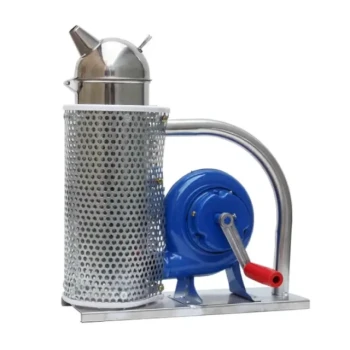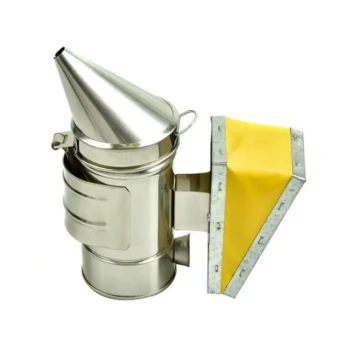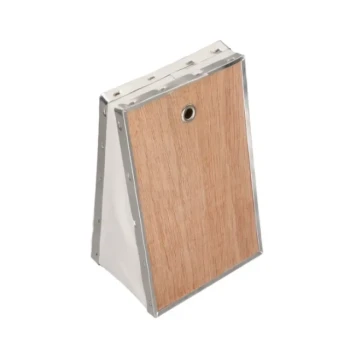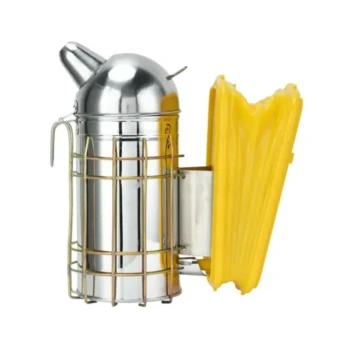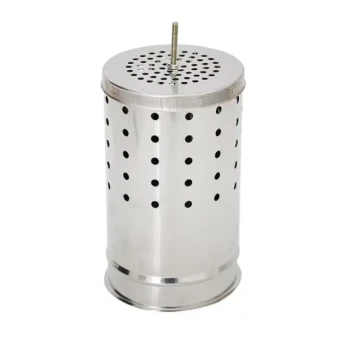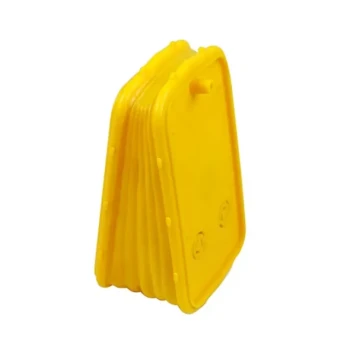At its core, using smoke on bees is a long-standing beekeeping practice designed to calm the colony and make hive inspections safer for both the bees and the beekeeper. The smoke interrupts the bees' primary defensive communication and triggers a natural survival instinct that makes them far less likely to sting.
Smoke does not sedate or harm bees when used correctly. Instead, it leverages two key biological responses: it masks the chemical alarm signals that trigger a defensive attack and it prompts bees to engorge on honey, making them physically less able to sting.
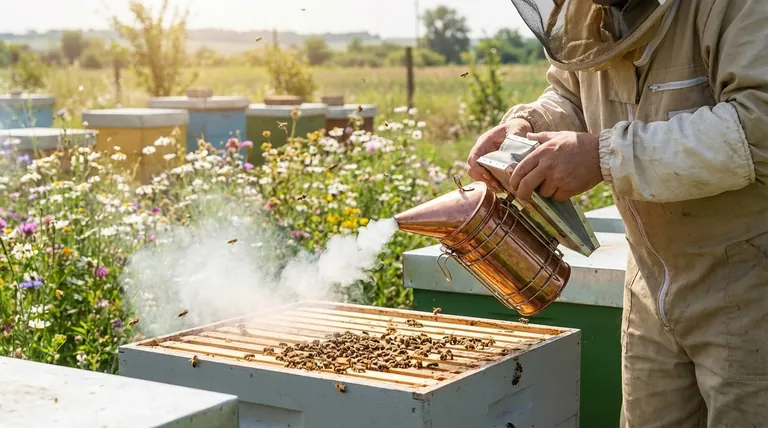
The Two-Fold Effect of Smoke on Bee Behavior
To understand why smoke works, you must understand how it interacts with a honeybee colony's natural instincts for defense and survival. The effect is both chemical and behavioral.
Interrupting the Hive's Alarm System
When a bee colony feels threatened or a bee stings, it releases alarm pheromones. These chemical signals are an incredibly efficient way to alert the entire hive to a potential danger, often triggering a mass defensive attack.
Smoke effectively masks these pheromones. It overwhelms the bees' sensitive sense of smell, preventing the alarm signal from spreading throughout the colony and stopping a defensive chain reaction before it starts.
Triggering a Survival Instinct
Bees associate smoke with fire, a catastrophic threat to their home. Their immediate instinct is not to fight, but to prepare to abandon the hive.
To do this, they rush to their honey stores and begin to engorge themselves, consuming as much honey as they can. This provides the energy they would need to fly a long distance and establish a new colony.
The "Full Stomach" Effect
This act of gorging on honey has a convenient side effect for the beekeeper. When a bee’s abdomen is full of honey, it becomes physically difficult for it to flex its body into the C-shape required to effectively aim and deploy its stinger.
This combination—a blocked alarm system and a belly full of honey—results in a calmer, more docile colony that is much less inclined to sting.
Understanding the Trade-offs and Proper Use
While smoke is an invaluable tool, its effectiveness depends entirely on correct application. Misuse can be counterproductive or even harmful.
The Risk of Overuse
Applying too much smoke can confuse and agitate the bees rather than calm them. Instead of triggering the gorging response, it can be perceived as a direct attack, creating chaos and making the bees more aggressive. Moderation is critical.
The Importance of "Cool" Smoke
The goal is to produce cool, white smoke, not hot smoke or flames. A beekeeper's smoker should be lit and allowed to smolder before use. Hot smoke can burn and kill bees, which is entirely counter to the purpose of ensuring a safe inspection.
Potential Impact on Honey
Excessive smoke can be absorbed by the beeswax within the hive. Over time, this can potentially alter the delicate flavor of the honey. This is another key reason why beekeepers use smoke sparingly and only when necessary.
A Temporary Measure
The effects of smoke are short-lived. A bee's sensitivity to pheromones typically returns within 10 to 20 minutes after the smoke dissipates. This is a temporary management technique, not a permanent change to the bees' behavior.
How to Apply This to Your Goal
Using smoke is about respecting bee biology and applying the tool with precision. Your approach should be guided by your primary objective.
- If your primary focus is bee safety: Use minimal, cool smoke to prevent stinging, as a sting is fatal for the bee and a mass stinging event can devastate a colony.
- If your primary focus is beekeeper safety: Apply a few gentle puffs at the hive entrance before opening it, and reapply sparingly if you notice the bees becoming agitated during the inspection.
- If your primary focus is honey quality: Use smoke judiciously and only when needed to avoid any risk of its aroma being absorbed by the beeswax and honey.
Ultimately, smoking a hive is a method of working with the bees' instincts, not against them, to ensure hive management is a safe and productive process for all involved.
Summary Table:
| Effect of Smoke | Benefit for Beekeeping |
|---|---|
| Masks alarm pheromones | Prevents mass defensive stinging response |
| Triggers honey-gorging instinct | Bees become docile and less able to sting |
| Creates a temporary calming effect | Allows for a safe 10-20 minute inspection window |
Ready to manage your hives with confidence? Equip your apiary with professional-grade smokers and beekeeping supplies from HONESTBEE. We supply commercial apiaries and distributors with the reliable equipment needed for safe, efficient hive inspections. Contact our wholesale experts today to discuss your needs and enhance your beekeeping operations.
Visual Guide
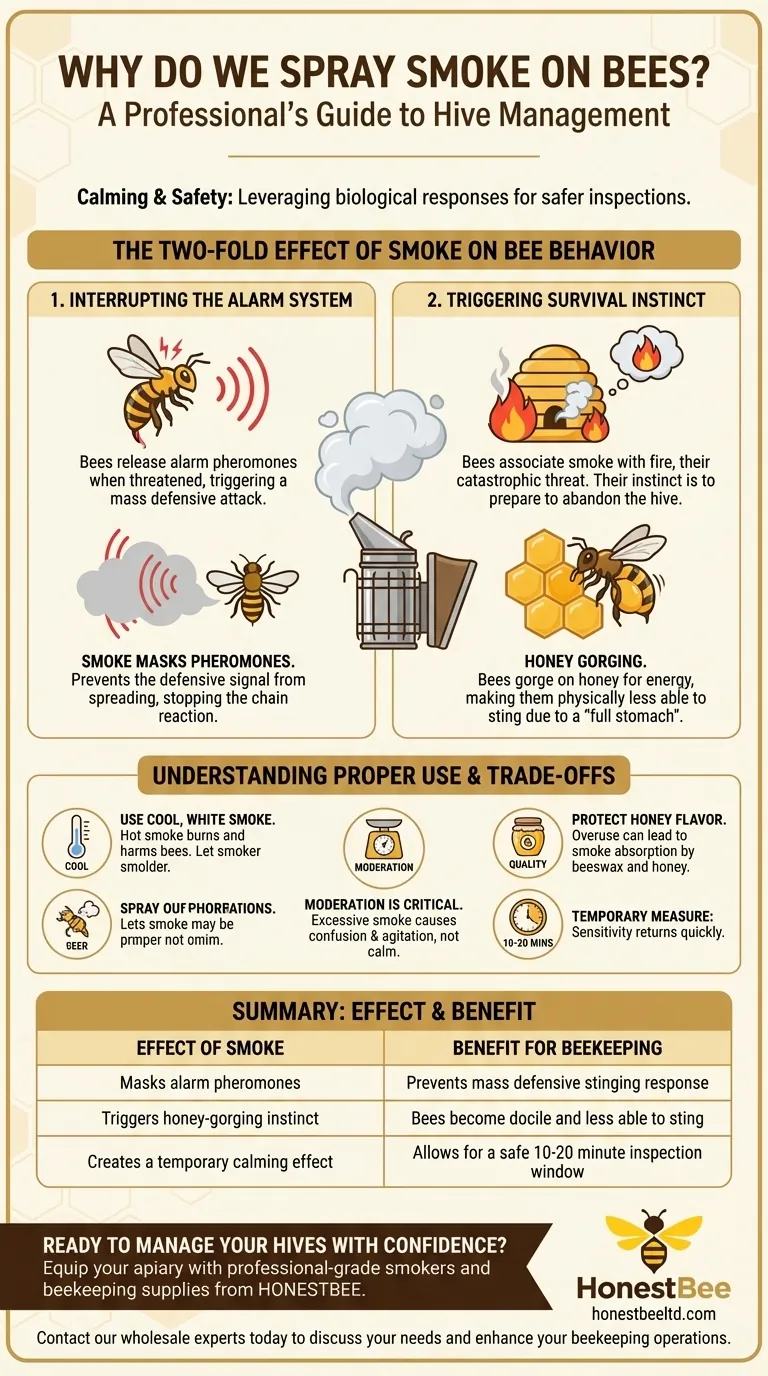
Related Products
- Premium Traditional Copper Bee Smoker with Bellows
- Stainless Steel Honey Bee Smoker Hive and Honeycomb Smoker for Beekeeping
- 54-Piece Smoker Fuel Pellets for Beekeeping Beehive Smoker Fuel
- European Stainless Steel Bee Smoker for Honey Bee Hive
- Economy Galvanized Beekeeping Honey Bee Smoker for Wholesale
People Also Ask
- What is the primary purpose of using smoke in beekeeping? Calm Bees for Safer Hive Management
- What are the main components of a bee smoker? A Guide to Safe and Effective Hive Management
- What are the benefits of using smoke properly in beekeeping? Achieve Calm, Safe Hive Inspections
- What is the purpose of a bee smoker and how should it be used? A Guide to Calm, Safe Hive Inspections
- How did early beekeepers use bee smokers? Master Ancient Bee Calming Techniques







